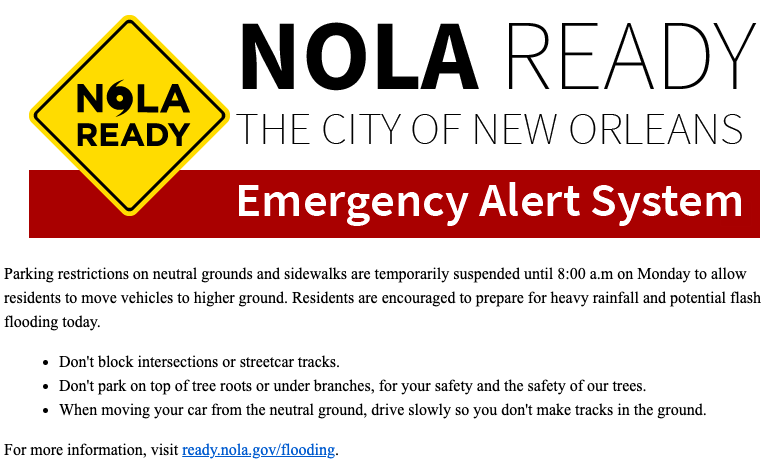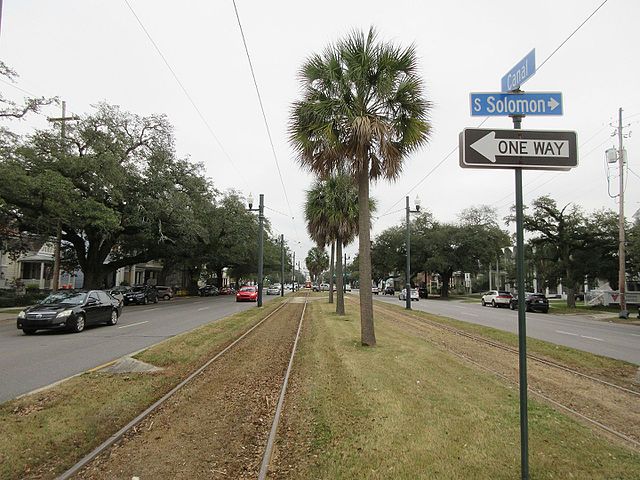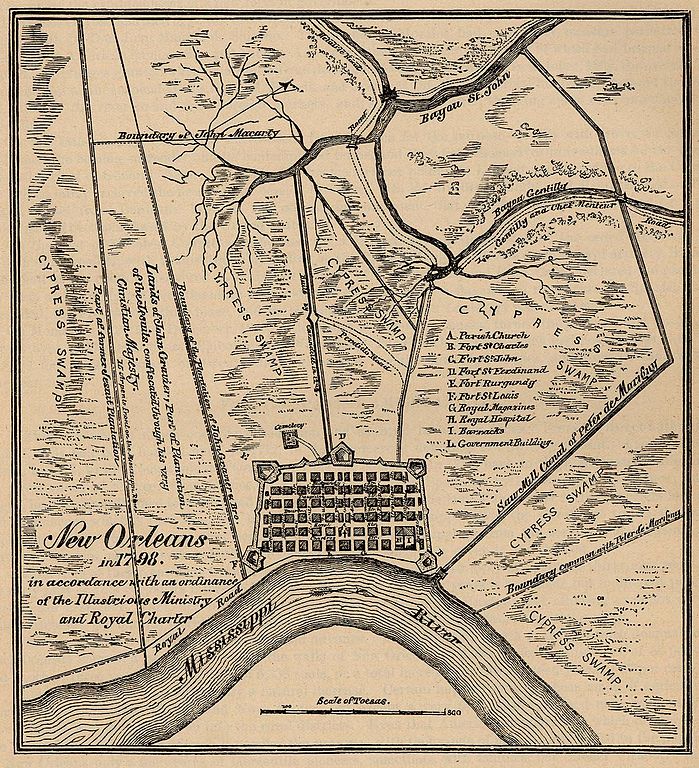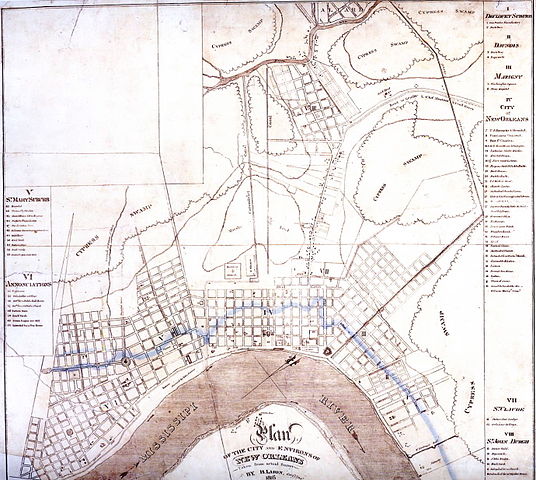
My son, Jay, is a sophomore at Loyola University in New Orleans, so the worrywart parent I am signed up for NOLA Ready alerts to track emergencies during hurricane season. The above flash flood alert caught my eye, particularly the reference to parking restrictions on sidewalks and neutral grounds. Flooding in New Orleans streets can get dangerous so the city allows residents to to park cars in neutral areas during heavy rainfall.
The phrase “neutral ground” caught my eye in particular. I am co-chairing the Information Architecture Conference this year, in charge of Experience, so I’m interested in spotting terms that might be unique to New Orleans.
One of Jay’s favorite places to hang out in the Uptown neighborhood is called Neutral Ground Coffeehouse. It’s a place where people of all ages can gather, sip coffee, listen to live music and generally enjoy themselves. Like Temple Sinai on Charles Street across from Loyola’s Jesuit campus, Neutral Ground is a place where a Jewish kid from New York City can find some familiar culture and feel at home, with nightly programming, a weekly poetry hour and open mic on Sundays.
The phrase “Neutral Ground” didn’t seem particularly unique as far as two word phrases go. Other than the clever play on coffee “grounds” it never occurred to me that “Neutral Ground” had a specific meaning in New Orleans history.
On the NOLA Ready alert, neutral ground refers to the grassy median space between the lanes of major streets. On lanes where the city’s iconic streetcars run there are expanses of neutral ground that accommodate the trains with additional buffers. The area may or not be elevated from the main street level, but with the sidewalks, they provide a place for cars to park during heavy storms. We found ourselves waiting in these areas for traffic to pass at several intersections where they do not have many traffic lights or pedestrian signals.

A 2017 Times-Picayune story describes the original Neutral Ground as the center of Canal Street, which represented the division between the historically French and Anglo-American sections of the city. The French Quarter is on the north side of the divide and represents the First Municipality which was settled by French Creoles in the early Eighteenth Century. The Second Municipality, on the south side where the Central Business District is today, was settled by English speaking people after the Louisiana Purchase in 1803.
Below is an 1798 map showing the French Quarter and fortifications. The diagonal line to the left of the quarter is the boundary of an adjacent plantation, owned by John Greamer and his brother.

Below is an 1816 plan for New Orleans after the Louisiana Purchase was completed. The rectangular area at the peak curve of the Missisippi is the French Quarter. Canal Street is the leftmost street in the French Quarter area, one block to the right of the diagonal plantation boundary, now Common Street.

Canal Street’s center divide was officially declared “The Neutral Ground” by the Daily Picayune on March 11, 1837 and the term has since been the general phrase to describe what most other places call the median.
I’m sure I’ll keep learning more New Orleans lingo in preparation for our conference in April. Just yesterday in a marketing team call, Joe Sokohl, our Experience Director who has family ties there, used the term “lagniappe,” another distinctively New Orleans term, derived from Quechua, to describe swag or giveaways we might provide at the IA Conference. I guess we all need a dictionary, so here’s a couple to keep up (these sites also have information for visitors):
Experience New Orleans, Say What?
http://www.experienceneworleans.com/glossary.html
New Orleans.com, NOLA Speak
https://www.neworleans.com/things-to-do/multicultural/colorful-words/
